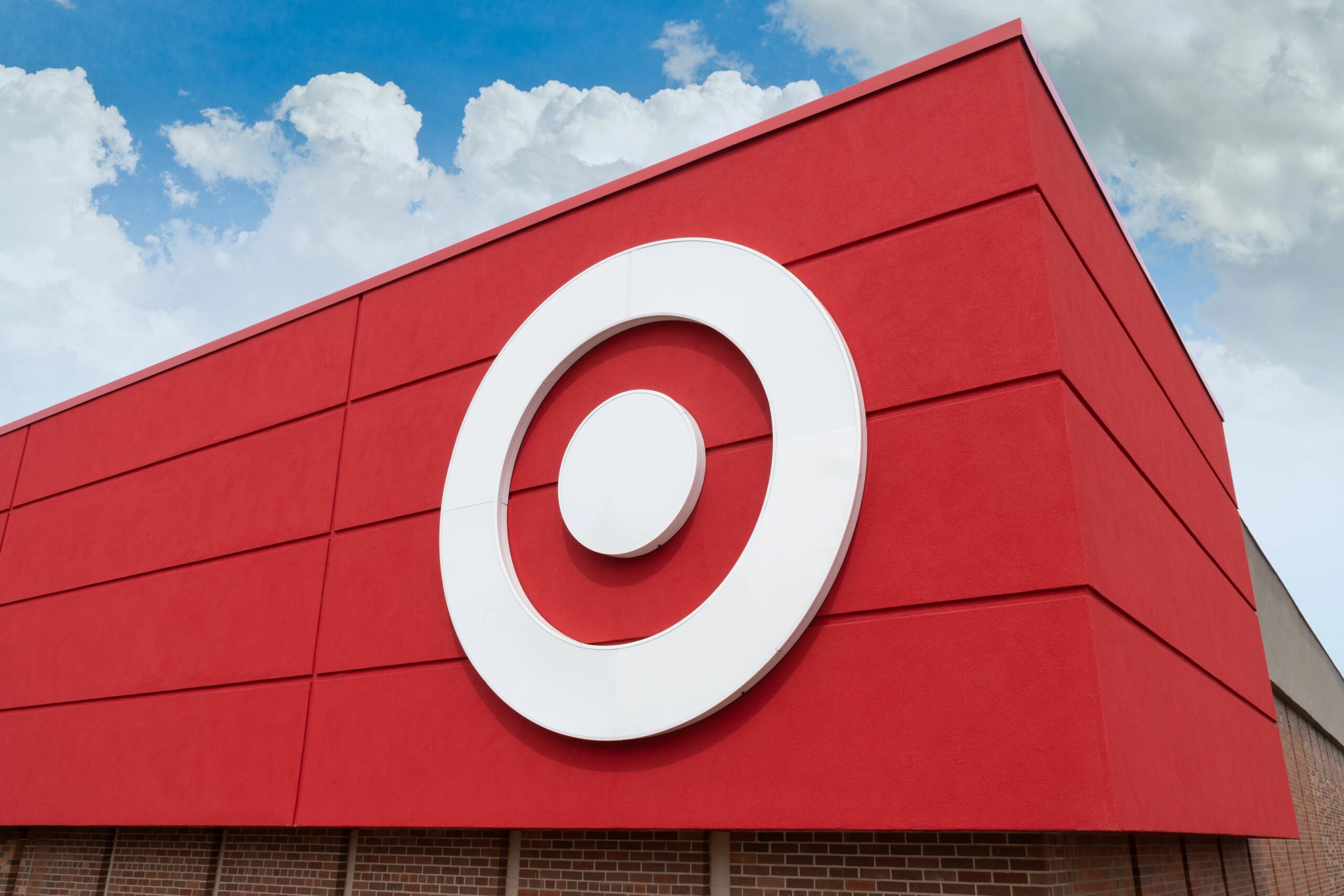
wolterke/Depositphotos.com
June 25, 2025
Will Target’s Planned Factory-Direct Shipping Model Improve Sales?
Perhaps eying the massive success enjoyed by Chinese e-commerce giants such as SHEIN and Temu, Target is allegedly testing the waters surrounding the launch of its own direct-shipping model, which would see items delivered to customers directly from overseas factories.
According to a June 24 Bloomberg report citing sources familiar with the matter, Target is keen to increase its low-cost offerings inventory by introducing the direct shipping model, although the plan remains in its developmental stage as of this writing.
Targeting apparel, household goods, and other non-food items is at the top of Target’s list, mirroring both SHEIN and Temu’s focus on the same. Given the lengthier delivery times (and turbulent customs policies concerning U.S.-bound shipments of Chinese origin), the focus on these categories is seemingly logical.
And despite the cultural criticisms emerging about SHEIN and Temu’s product quality and sustainability scorecard, Target is ostensibly committed to setting a higher bar than established competitors in the low-cost retail space.
“In all cases, we uphold the high quality, responsible sourcing and sustainability standards that Target is known for and that consumers expect from us,” a Target spokeswoman said regarding the company’s commitment to testing new ways to deliver products and services.
The Closure of the De Minimis Exemption, Broader Tariff Concerns Could Halt Target’s Plans
Other headwinds loom large for Target — as well as Temu, SHEIN, and others importing goods directly to customers from China.
President Donald Trump signed an administrative order on April 2, taking effect May 2, effectively ending the de minimis exemption, meaning that tariffs and/or duties can and will apply to packages valued at $800 or less headed to U.S. consumers or companies from China. That move has done at least some degree of damage to both Temu and SHEIN, sending growth rates for both companies plummeting as prices for U.S. consumers ticked upward, per a separate May 15 Bloomberg report.
Trump’s on-again, off-again tariff policy — though largely targeting China, also applicable to a host of other nations importing to the U.S. — also poses a significant risk for Target’s stated game plan.
Finally, a saturated market with established entrants could pose difficulties for Target as it attempts to gain a foothold. Not only have Temu and SHEIN garnered large consumer bases, but Amazon Haul also entered the space late last year, and AliExpress is redoubling efforts to establish a significant base of operations in the United States.
Despite high-profile attempts to revive its “Tarzhay” brand image via celebrity collaborations, cheeky ad campaigns, and a revamped health and beauty section, Target has been beset by problems, including softening sales, inventory missteps, and frequent boycotts related to its perceived sociopolitical stances.
All in all, Target has endured a 28% stock price dip this year, versus an overall improvement of the S&P 500 index of 3.6%.
“Major holidays and limited-time design collaborations are bringing shoppers into stores, but the company isn’t seeing that momentum every day, executives said. To counter this, the retailer is sharpening its focus on low prices and new products. In recent months, Target has said it’s speeding up product development,” Bloomberg concluded.
Discussion Questions
Will Target’s factory-direct shipping model actually drive significant spend? Or is it wiser for the retailer to focus on revitalizing its brand image and existing distribution channels?
Can Target achieve a foothold in a market already dominated by Temu, SHEIN, AliExpress, and more recently Amazon Haul? Why or why not?
What differentiators could Target integrate into its planned factory-direct shipping model to stand out among competitors?
Poll
BrainTrust
Carol Spieckerman
President, Spieckerman Retail
Doug Garnett
President, Protonik
David Biernbaum
Founder & President, David Biernbaum & Associates LLC
Recent Discussions








Why this, why now? I can’t imagine this is Target’s next best move when it arguably hasn’t maxed out opportunities with its online marketplace and with so many unforced errors still to be sorted out. I feel a major distraction coming when Target is least prepared to manage it.
I can’t figure out what has happened to Brian Cornell’s judgment. He was doing so incredibly well. But the past year has been noted as misstep after misstep.
Indeed! He seemed to be a refreshing alternative to the imperious (and impervious) tone set by previous leadership. Now, not so much. A discordant, old-school vibe has crept in that is at odds with Target’s brand promise and retail reality. With that mindset, bolting on buzzy business models seems more logical than cleaning up the core.
Target arguably has bigger fish to fry than this. There is also a point to be made that, if not executed carefully, this could cannibalize mainstream sales at Target.
This sounds a great deal like a discussion targeting investors and not how the company does business. It fits all the investor ideas (fads, hype, misdirection) while it also doesn’t appear to be something which will make much of a difference for Target — sounds a lot like re-organizing the deck chairs. I wrote recently about how popular “Performative Experiments” have become in a blog post about the need for rebellious bees.
If the de minimis exemption were to hold, factory-direct shipments from overseas could be a slight boon for Target.com. Among other benefits, it could make sales forecasting and warehousing less of an issue for some products, while skirting some tariffs.
But I don’t envision this as a move that will make a very material difference in the company’s overall performance.
I don’t hear many people complaining that Target’s apparel is too expensive, so I doubt that this new effort will affect profitability significantly. Better for Target to correct the missteps of 2025, including the dumb decision to axe DEI. (Isn’t most of Target’s customer base WOMEN?)
Target’s most freq in store is probably women (e.g. suburban middle age mom), but the brand does try to flatten gender skew.
–Market strategy of college locations is brilliant (as Bed Bath & Beyond, and Circuit City specialty category stores fell apart).There’s a large format store in the walkable midst of UCLA campus that stays busy.
–If gender neutral at college age, they have less to overcome after young adulthood..
Online, pick up in store, education/tech, gaming… can morph into apartment & home life.
What can pluck off male shoppers is the competitive nature of commerce… home delivery/in home set up, massive selection of sites like newegg, and upscaling (from athleisure to sports enthusiast!).
The elimination of the de minimis exemption creates significant headwinds for Target’s factory-direct ambitions. But the real question isn’t regulatory—it’s strategic: what customer problem does Target think it’s solving?
Target’s strength has always been curated discovery through edited assortments—the antithesis of the factory-direct approach’s overwhelming catalog. Customers choose Target for the intersection of design, accessibility, and experience, not endless selection at rock-bottom prices.
Cornell’s team should leverage their unmatched physical footprint for services pure-play e-commerce can’t replicate: same-day fulfillment, seamless returns, and experiential retail. The opportunity lies in strengthening Target’s core value proposition, not diluting it with me-too strategies that play to competitors’ strengths.
With a 28% stock decline this year, the pressure to announce bold initiatives is understandable. But Target needs focus, not distraction. The company hasn’t fully maximized its existing marketplace infrastructure—why layer on additional operational complexity when foundational challenges remain unresolved?
Factory-direct represents a fundamental brand pivot away from what made Target “Tarzhay.” Sometimes the best strategy is knowing which battles not to fight. Target’s path forward isn’t through imitating Temu and SHEIN, but rather through doubling down on differentiation.
You nailed it in the first paragraph Mohamed, exactly what I was thinking – what customer problem does Target think it’s solving??!!
Target takes its eyes off the ball.
These issues highlight Target’s strategic dilemma. Although factory-direct shipping may reduce costs and improve efficiency, revitalizing the brand and optimizing existing channels may provide a better opportunity for improving customer loyalty and market positioning. A successful decision depends on balancing short-term gains with long-term brand sustainability.
As I read this, Target thinks it will improve its performance by adding a ride share like, “wait and save” pricing option under the guise of factory-direct shipping. I don’t see value in part of the Target brand promise being to buy and wait for cheaper items.
This sounds like an idea that made sense when it originated deep within a marketing or product development silo, but should have been shelved when it was pressure-tested by a full 360 degree review of all the pro’s and con’s.